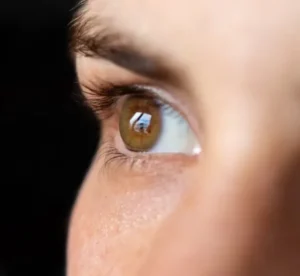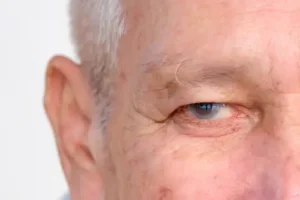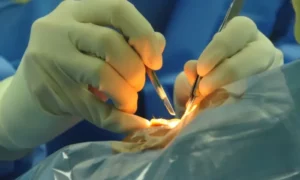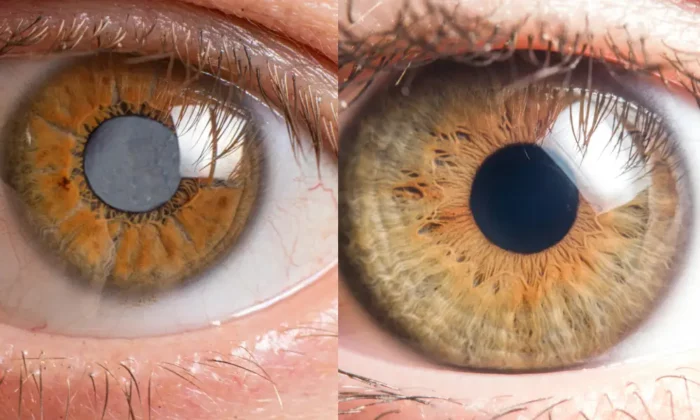Have you heard of glaucoma and cataracts? They are two common eye problems that can change the way you see. Even though they might seem similar, they are actually quite different. In this blog, we’re going to break down ‘cataracts vs glaucoma.’
We’ll explore what each of these eye problems is, how they affect your vision, and what makes them different. You’ll learn about their causes, how to spot their symptoms, and the treatment options available. So, if you’re looking to understand the key differences between cataracts and glaucoma, stay tuned.
Contents
- 1 Cataracts vs. Glaucoma: Key Differences
- 2 Symptoms of Cataracts vs. Glaucoma
- 3 Risk Factors and Causes
- 4 Which is More Serious: Glaucoma or Cataract?
- 5 Can a Person Have Both Glaucoma and Cataracts?
- 6 Treatment Approaches: Cataracts vs. Glaucoma
- 7 Prevention Strategies and Lifestyle Adjustments
- 8 Conclusion
Cataracts vs. Glaucoma: Key Differences
Cataracts are characterized by the clouding of the eye’s natural lens, which lies behind the iris and the pupil. This clouding occurs when the proteins in the lens clump together, obscuring vision. Cataracts develop slowly and can affect one or both eyes. They’re most commonly associated with aging, but other factors like diabetes, smoking, or prolonged exposure to UV rays can also contribute to their development.
Glaucoma, on the other hand, is a group of eye conditions that damage the optic nerve, vital for good vision. This damage is often caused by abnormally high pressure in your eye. Glaucoma can be more insidious, as it may not show symptoms until there’s significant vision loss. It’s categorized mainly into two types: open-angle and angle-closure glaucoma. Open-angle glaucoma, the more common form, develops slowly, while angle-closure glaucoma can occur suddenly and is a medical emergency.
Understanding these basic differences is crucial as we delve deeper into the specifics of cataracts and glaucoma, their symptoms, treatment options, and how they uniquely impact eye health.
Symptoms of Cataracts vs. Glaucoma
 While cataracts and glaucoma are both eye conditions that can lead to vision loss, they present with different symptoms. Understanding these symptoms can help in early detection and treatment.
While cataracts and glaucoma are both eye conditions that can lead to vision loss, they present with different symptoms. Understanding these symptoms can help in early detection and treatment.
Symptoms of Cataracts:
- Gradual decrease in vision clarity: Vision becomes blurry or cloudy, like looking through a fogged-up window.
- Sensitivity to light and glare: Bright lights can become overwhelming or cause halos around lights.
- Fading or yellowing of colors: Colors may not appear as vibrant as they once did.
- Difficulty with vision at night: Night vision deteriorates, making it hard to see in low-light conditions.
- Double vision in one eye: Objects may appear double, even when only one eye is open.
Cataract symptoms usually develop slowly over time. They can affect one or both eyes, but they don’t lead to complete blindness.
Symptoms of Glaucoma:
- Gradual loss of peripheral vision: This often starts with a loss of side vision.
- Asymptomatic in early stages: Especially in the case of open-angle glaucoma, there might be no noticeable symptoms initially.
- Severe eye pain: This is more common in angle-closure glaucoma.
- Blurred vision: Sudden visual disturbance, often in low light.
- Halos around lights: Seeing rings around lights, particularly at night.
- Redness of the eye: The eye may appear redder than usual.
- Headaches and nausea: Accompanying the eye pain, especially in acute cases.
Glaucoma’s symptoms can vary depending on the type and stage of the condition. In many cases, particularly with open-angle glaucoma, significant vision loss can occur before any symptoms are noticed.
Understanding these symptoms is vital for early detection and management of both cataracts and glaucoma. Regular eye examinations are crucial, as they can help in diagnosing these conditions early, potentially saving one’s vision.
Risk Factors and Causes
 Understanding the risk factors and causes of cataracts and glaucoma is crucial for early detection and prevention. Both conditions have distinct risk factors, although some overlap.
Understanding the risk factors and causes of cataracts and glaucoma is crucial for early detection and prevention. Both conditions have distinct risk factors, although some overlap.
Risk Factors and Causes of Cataracts:
- Age: The most common cause of cataracts is aging. The risk increases significantly after age 60.
- Family History: A genetic predisposition can increase the risk of developing cataracts.
- Medical Conditions: Diabetes, obesity, and hypertension are known to increase the risk.
- Eye Injury or Surgery: Past eye injuries or surgeries can lead to the development of cataracts.
- Lifestyle Factors: Smoking and excessive alcohol consumption can elevate the risk.
- Prolonged Exposure to Sunlight: Ultraviolet light from the sun can contribute to cataract formation.
Risk Factors and Causes of Glaucoma:
- Age: Risk increases with age, particularly after 40.
- Family History: A significant factor, especially if immediate family members have glaucoma.
- Ethnicity: People of African, Asian, and Hispanic descent are at higher risk.
- Eye Conditions: High eye pressure, thin corneas, and chronic eye inflammation can increase the risk.
- Medical Conditions: Diabetes, heart disease, and high blood pressure are linked to higher glaucoma risk.
- Use of Corticosteroids: Especially prolonged use of corticosteroid medications.
It’s important to note that while these factors can increase the risk, they do not guarantee that a person will develop cataracts or glaucoma. Regular eye examinations are essential for monitoring eye health, especially for those with multiple risk factors.
Which is More Serious: Glaucoma or Cataract?
 It’s a common question among individuals concerned about their eye health: which is the more serious eye condition, glaucoma or cataract?
It’s a common question among individuals concerned about their eye health: which is the more serious eye condition, glaucoma or cataract?
While both conditions can significantly impact vision, but in different ways.
- Typically, cataracts are treatable with surgery, where the clouded lens is replaced with an artificial one.
- Glaucoma generally poses a more immediate risk to vision than cataracts. The vision loss due to glaucoma is irreversible and can lead to blindness if not treated timely and appropriately.
In summary, while cataracts can significantly impair vision, they are generally treatable with a good prognosis. Glaucoma, on the other hand, is a worse condition that can lead to irreversible vision loss and requires ongoing management to prevent further deterioration.
Can a Person Have Both Glaucoma and Cataracts?
It is indeed possible for a person to have both glaucoma and cataracts simultaneously. However, it’s important to note that having cataracts does not necessarily mean one will develop glaucoma, nor do cataracts turn into glaucoma.
Cataracts and Glaucoma Coexistence:

- Age Factor: Both conditions are more common in older adults. Therefore, it’s not unusual for someone in their senior years to develop both.
- Independent Conditions: Cataracts are characterized by the clouding of the lens, while glaucoma involves damage to the optic nerve, often due to increased pressure in the eye. They develop independently but can impact the same individual.
Do Cataracts Lead to Glaucoma?
- Separate Pathologies: Cataracts do not transform or turn into glaucoma. They are distinct conditions with different causes and mechanisms.
- Potential Risk Increase: In rare cases, certain types of cataracts can increase the risk of developing a specific type of glaucoma. For example, advanced cataracts can sometimes lead to a form of glaucoma known as angle-closure glaucoma due to the physical changes in the eye’s structure. However, this is not a common occurrence.
In conclusion, while a person can have both glaucoma and cataracts, one does not cause the other. Both require separate treatment and management strategies. Regular eye exams are key in detecting these conditions early and managing them effectively.
Treatment Approaches: Cataracts vs. Glaucoma
Let’s dive into the distinctive treatment approaches for cataracts and glaucoma, shedding light on the differences in managing these two eye conditions:
Surgery for Cataracts
 Cataract surgery is the primary treatment option for cataracts, aiming to remove the cloudy lens and replace it with a clear artificial lens. Here’s how it works:
Cataract surgery is the primary treatment option for cataracts, aiming to remove the cloudy lens and replace it with a clear artificial lens. Here’s how it works:
- Surgical Procedure: Cataract surgery involves making a small incision in the eye, breaking up the cloudy lens, and removing it using ultrasound technology. An artificial lens, known as an intraocular lens (IOL), is then inserted to restore clear vision.
- Restoration of Vision: Cataract surgery is highly effective, often resulting in a significant improvement in vision. Many individuals experience a full restoration of their vision, and the procedure is considered one of the most successful surgical interventions in medicine.
- Minimal Recovery Time: The recovery period after cataract surgery is relatively short, with most people experiencing improved vision within a few days to weeks.
Medications for Glaucoma
 Glaucoma management primarily involves the use of medications to reduce intraocular pressure (IOP). Here’s an overview of glaucoma medications:
Glaucoma management primarily involves the use of medications to reduce intraocular pressure (IOP). Here’s an overview of glaucoma medications:
- Medication Types: Glaucoma medications come in various forms, including eye drops and oral medications. These medications work by either reducing the production of intraocular fluid or increasing its outflow to lower IOP.
- Regular Use: Glaucoma medications require consistent and long-term use to maintain IOP at a safe level and prevent optic nerve damage.
- Ongoing Management: Unlike cataract surgery, glaucoma management is an ongoing process that may last a lifetime. Regular follow-up appointments are essential to monitor the effectiveness of medications and adjust treatment as needed.
- Early Detection and Treatment: Early diagnosis and timely initiation of glaucoma medications are crucial in preventing vision loss. Regular eye examinations are essential for detecting glaucoma in its early stages.
Understanding the distinctive treatment approaches for cataracts and glaucoma is essential, as it highlights the need for accurate diagnosis and appropriate management. If you’re experiencing vision issues or have concerns about your eye health, consider scheduling a free checkup by calling our helpline number. Early intervention can make a significant difference in preserving your vision and overall eye health.
Prevention Strategies and Lifestyle Adjustments
Preventing cataracts and glaucoma involves a combination of lifestyle adjustments and proactive eye care strategies. While some risk factors like age and genetics can’t be changed, there are several ways to reduce the risk or slow the progression of these eye conditions.
- Regular eye exams are crucial, especially as you age or if you have risk factors for these conditions. Early detection can lead to more effective management
- Wear sunglasses that block out 99% to 100% of both UV-A and UV-B radiation to protect your eyes from sun damage, which can contribute to cataract development.
- A hat with a wide brim can also provide additional protection against the sun.
- Consuming foods rich in antioxidants, like vitamins C and E, can help reduce the risk of cataracts. Include plenty of fruits and vegetables in your diet.
- Foods high in omega-3 fatty acids, such as fish, may also help in glaucoma prevention.
- Proper management of conditions like diabetes and hypertension can reduce the risk of developing eye problems.
- Avoid smoking and limit alcohol consumption
- Exercise regularly
- Wear protective eyewear during activities that could lead to eye injury.
- Take regular breaks when working on computers or engaging in activities that strain your eyes.
Incorporating these strategies into your daily routine can play a significant role in maintaining eye health and potentially preventing the development or progression of cataracts and glaucoma.
Conclusion
In conclusion, understanding the differences between glaucoma and cataract is crucial in recognizing the nature and seriousness of these eye conditions. While both conditions affect vision, glaucoma is generally considered more serious due to its potential for irreversible vision loss. On the other hand, cataracts, although impacting daily life and visual quality, can be effectively treated through cataract surgery, which is known for its high success rates.
If you’re dealing with cataract-related problems, our team at EyeMantra is ready to assist you. We offer expert cataract surgery that can help you regain clear vision and enhance your quality of life. Don’t let vision issues hold you back – book your free appointment now by calling us at 9711116605.
Take the first step towards clearer vision today, and schedule your free checkup with EyeMantra.



